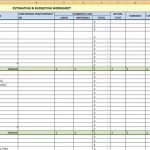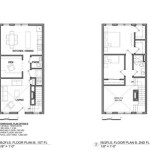Essential Aspects of Typical Scale For Floor Plans
Floor plans are crucial tools for visualizing and communicating design concepts. Understanding the concept of scale is essential when creating accurate and informative floor plans. Scale plays a vital role in ensuring that the drawn representation accurately reflects the actual dimensions of the space.
Understanding Scale
Scale refers to the ratio between the size of the drawing and the actual size of the object or space being represented. In the case of floor plans, the scale indicates how many units on the drawing correspond to a specific number of units in the real world. There are two main types of scale:
- Metric Scale: Uses metric units such as millimeters (mm), centimeters (cm), and meters (m).
- Imperial Scale: Uses imperial units such as inches (in), feet (ft), and yards (yd).
Common Floor Plan Scales
Depending on the size and complexity of the space being represented, different scales may be used. Some common scales used in floor plan drawings include:
- 1:100 Scale: Used for large-scale plans of entire buildings or campuses, including multiple floors.
- 1:50 Scale: Suitable for detailed plans of individual floors or sections of buildings, showing rooms, walls, and fixtures. li>1:25 Scale: Often used for detailed drawings of smaller spaces, such as bathrooms or kitchens, where precise measurements are crucial.
- 1:10 Scale: Used for full-scale drawings of specific details or elements within a space, such as a fireplace or built-in cabinetry.
Choosing the Right Scale
The appropriate scale for a floor plan depends on the intended purpose of the drawing. For general layout and space planning, a smaller scale may be sufficient. However, if detailed measurements or precise placement of fixtures is important, a larger scale is recommended.
Drawing to Scale
When creating floor plans, it is essential to draw to the correct scale. This can be done using:
- Scale Rulers: Specialized rulers with markings that correspond to various scales.
- Computer-Aided Design (CAD) Software: CAD software allows users to specify the scale of their drawings and automatically calculate measurements.
Benefits of Using Scale
Using the correct scale in floor plans offers several benefits:
- Accuracy: Ensures that the floor plan accurately represents the actual dimensions of the space.
- Clarity: Makes it easy to understand the layout and measurements of the space.
- Communication: Facilitates effective communication between designers, builders, and other stakeholders.
- Legal Compliance: May be required for certain building permits or construction regulations.
Conclusion
Understanding and using scale effectively is crucial for creating accurate and informative floor plans. By choosing the appropriate scale and drawing to the correct dimensions, architects and designers can effectively communicate their design concepts and facilitate the successful implementation of projects.
How To Draw ¼ 1 Scale For A Floor Plan Quora
How To Draw A Floor Plan Scale Quora

How To Draw A Floor Plan Scale Measuring Sketching

How To Measure And Draw A Floor Plan Scale

How To Measure And Draw A Floor Plan Scale

How To Measure Distances In Technical Drawings With Custom Scale Annotator

How To Draw A Floor Plan Scale Measuring Sketching

How To Draw A Floor Plan Scale Measuring Sketching

How To Read And Draw A Scale Floor Plan Scaled Floorplans Drawing Course For Architecture Students

How To Read A Basic Floor Plan Lofty Building Group
Related Posts








